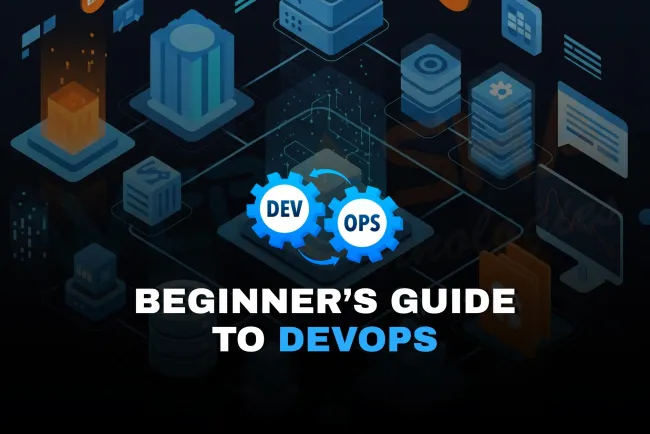How Security Champions & Shift‑Left Culture Are Transforming DevSecOps in 2025
Discover how Security Champions and the Shift-Left approach are empowering developers to lead security from the start. Learn how this DevSecOps strategy reduces alert fatigue, bridges team silos, and improves secure software delivery.

Table of Contents
- Introduction: Why Security Needs a Culture Shift
- What Is a Security Champion?
- Understanding Shift‑Left Security
- Why Security Champions Are the Key to DevSecOps Culture
- Real-World Example: How Google Uses Security Champions
- Tools That Support Shift-Left Culture
- Building a Shift‑Left Culture: 5 Steps to Start
- Common Challenges (And How to Beat Them)
- Future of DevSecOps: AI + Champions = Supercharged Security
- Conclusion
- Frequently Asked Questions (FAQs)
Introduction: Why Security Needs a Culture Shift
Picture this: your development team is shipping features fast, but your security team is overwhelmed with alerts and vulnerabilities popping up after deployment. It’s like patching holes in a ship after it’s already sailed.
Now imagine if developers themselves acted as security advocates, spotting issues before the code even left their machine. That’s the power of Security Champions and the Shift‑Left Culture — transforming security from an afterthought into a shared responsibility.
In 2025, as DevSecOps matures, organizations are embedding security into development workflows by empowering developers, building stronger collaboration, and reducing alert fatigue. Let’s dive into how this works.
What Is a Security Champion?
A Security Champion is a developer who becomes the go-to person for security within their team. They aren’t full-time security pros but act as a bridge between developers and security engineers.
Think of them as:
-
Security ambassadors within dev teams
-
Advocates for secure coding practices
-
People who raise awareness about threats and compliance
-
First responders for low-risk security issues
This role decentralizes security expertise, making it more scalable across large engineering orgs.
Understanding Shift‑Left Security
Shift-left security means addressing security earlier in the software development lifecycle (SDLC). Instead of waiting for the final security review before launch, teams catch bugs, misconfigurations, or risky logic in the planning and coding stages.
It’s like fixing grammar while you’re typing a sentence, not after you’ve printed the entire book.
Benefits of Shift-Left:
-
Faster delivery with fewer last-minute surprises
-
Reduced costs by fixing issues earlier
-
Stronger DevSecOps collaboration
-
Empowered developers who feel ownership over security
Why Security Champions Are the Key to DevSecOps Culture
Modern software delivery is fast-paced. Security teams can’t manually review every pull request or deployment. Security Champions help scale security awareness, turning each developer into a security-conscious engineer.
Here’s what Security Champions actually do:
-
Participate in threat modeling and risk assessments
-
Promote use of secure libraries and frameworks
-
Help developers triage and respond to security alerts
-
Provide feedback on tools like SAST/DAST and secrets scanners
-
Deliver lightweight security training within their team
By integrating security into Agile workflows, they shift left without slowing down.
Real-World Example: How Google Uses Security Champions
At Google, teams are encouraged to designate security-minded developers who monitor their team’s security practices and help implement changes during design, code reviews, and production. This has improved compliance, reduced critical bugs, and enabled faster feedback loops.
Tools That Support Shift-Left Culture
Security Champions thrive when supported by the right tools:
| Tool Type | Examples | Purpose |
|---|---|---|
| Code Scanning (SAST) | GitHub CodeQL, SonarQube | Detects code-level vulnerabilities early |
| Secrets Detection | Gitleaks, TruffleHog | Prevents exposed tokens/keys in repos |
| Dependency Scanning | Snyk, OWASP Dependency-Check | Catches vulnerable libraries |
| Infrastructure Scanning (IaC) | Checkov, tfsec | Ensures secure cloud configs |
| Policy-as-Code | OPA, Sentinel | Automates security policies in pipelines |
Building a Shift‑Left Culture: 5 Steps to Start
-
Nominate Security Champions: Pick at least one developer per team to represent security.
-
Provide Hands-On Training: Focus on practical, contextual security knowledge.
-
Use Automation: Shift left with tools that integrate into CI/CD and IDEs.
-
Celebrate Wins: Recognize teams who prevent vulnerabilities, not just fix them.
-
Encourage Collaboration: Break silos between AppSec and Engineering.
Common Challenges (And How to Beat Them)
| Challenge | Solution |
|---|---|
| Lack of security awareness | Host regular, engaging training |
| Resistance to change | Show how secure code avoids rework |
| Tool fatigue | Choose tools with low friction and high value |
| Alert overload | Prioritize and automate triage for low-risk issues |
Future of DevSecOps: AI + Champions = Supercharged Security
AI-powered code reviews, threat detection, and policy enforcement are gaining traction. Combine that with human champions who understand business context, and you get a balanced defense that’s fast and smart.
Security Champions won’t replace security teams — they amplify them.
✅ Conclusion
Security Champions and the Shift-Left mindset are more than just buzzwords. They’re critical shifts in how modern organizations build safer software, faster. By empowering developers, reducing alert fatigue, and embedding security from the start, teams move from reactive to resilient.
In a world of zero-day threats and fast CI/CD pipelines, the best defense is a developer who thinks like a defender — and that’s exactly what Security Champions create.
FAQ
What is a Security Champion in DevSecOps?
A Security Champion is a developer or team member who advocates for secure coding and ensures security is embedded early in the development process.
What does Shift‑Left mean in software security?
Shift‑Left means addressing security earlier in the software development lifecycle (SDLC), typically during the coding or design stages.
Why are Security Champions important in modern DevOps teams?
They act as a bridge between development and security teams, ensuring security is part of daily development rather than a last-minute add-on.
How does Shift‑Left security reduce vulnerabilities?
By catching misconfigurations, coding flaws, and threats earlier in the pipeline, it prevents costly rework and breaches later on.
How do Security Champions reduce alert fatigue?
They help triage alerts, promote context-aware handling, and encourage using automated tools to reduce noise from false positives.
Can Shift‑Left culture help in regulatory compliance?
Yes, integrating security checks early helps maintain compliance with standards like GDPR, HIPAA, and PCI-DSS.
What kind of training does a Security Champion need?
Basic security principles, secure coding practices, threat modeling, and familiarity with CI/CD security tools.
Who selects Security Champions in a team?
Usually, organizations choose developers who are interested in security and willing to guide their peers.
How does Shift‑Left affect the development workflow?
It encourages writing secure code from the start, integrating tools like SAST, DAST, and IaC scanners into the CI/CD pipeline.
What tools support Shift‑Left security?
Tools like Snyk, SonarQube, GitHub CodeQL, Checkmarx, and OWASP Dependency-Check support early security scanning.
Are Security Champions full-time security professionals?
Not necessarily—they are typically developers who volunteer or are nominated to take on additional security responsibilities.
How do Security Champions promote security awareness?
They host internal sessions, share updates on vulnerabilities, and help integrate security in daily standups or code reviews.
What challenges do Security Champions face?
Balancing regular development tasks with security responsibilities, and sometimes lacking formal authority or training.
What’s the impact of Shift‑Left on release speed?
Contrary to fear, it can actually speed up delivery by avoiding late-stage delays caused by unaddressed security issues.
Is Shift‑Left culture only for large enterprises?
No, even small development teams benefit from embedding security early and designating champions.
How often should Security Champions be trained?
Ideally every 6–12 months, or whenever major tooling or threat landscape changes occur.
Can Shift‑Left approaches be automated?
Yes, automated scanning, policy enforcement, and pull request checks can make Shift‑Left more scalable.
How do Security Champions handle third-party dependencies?
They promote using tools that scan open-source packages for known vulnerabilities and ensure licensing compliance.
How does a Security Champion help during incidents?
They can act as first responders within dev teams, helping assess the scope and aiding in containment quickly.
What KPIs can measure the success of Shift‑Left security?
Fewer post-deployment vulnerabilities, faster remediation times, and improved developer security practices.
How to start a Security Champion program?
Identify willing developers, provide basic training, and embed security goals into team KPIs.
Is Shift‑Left effective for cloud-native applications?
Yes, it aligns perfectly with rapid DevOps cycles and containerized, microservices-based architectures.
How do you incentivize developers to become Security Champions?
Through recognition, certifications, performance bonuses, or career growth opportunities.
Can Security Champions use policy-as-code tools?
Absolutely—tools like OPA (Open Policy Agent) allow them to codify security rules into pipelines.
How does Shift‑Left impact QA and testing?
Security becomes part of functional testing, integrating into test automation and code quality checks.
What’s the difference between DevSecOps and Shift‑Left?
Shift‑Left is a strategy within DevSecOps that emphasizes early integration of security in the SDLC.
Do Security Champions replace security teams?
No, they supplement security teams by acting as liaisons and helping scale secure practices.
How to scale a Security Champion program?
Document best practices, create internal security communities, and offer mentorship for new champions.
Is threat modeling part of Shift‑Left security?
Yes, early threat modeling helps developers understand risk during design and coding phases.
What are the long-term benefits of Security Champions and Shift‑Left culture?
Fewer security incidents, more secure code, faster releases, better team collaboration, and improved organizational trust.











![Top 10 Ethical Hackers in the World [2025]](https://www.webasha.com/blog/uploads/images/202408/image_100x75_66c2f983c207b.webp)



![[2025] Top 100+ VAPT Interview Questions and Answers](https://www.webasha.com/blog/uploads/images/image_100x75_6512b1e4b64f7.jpg)







